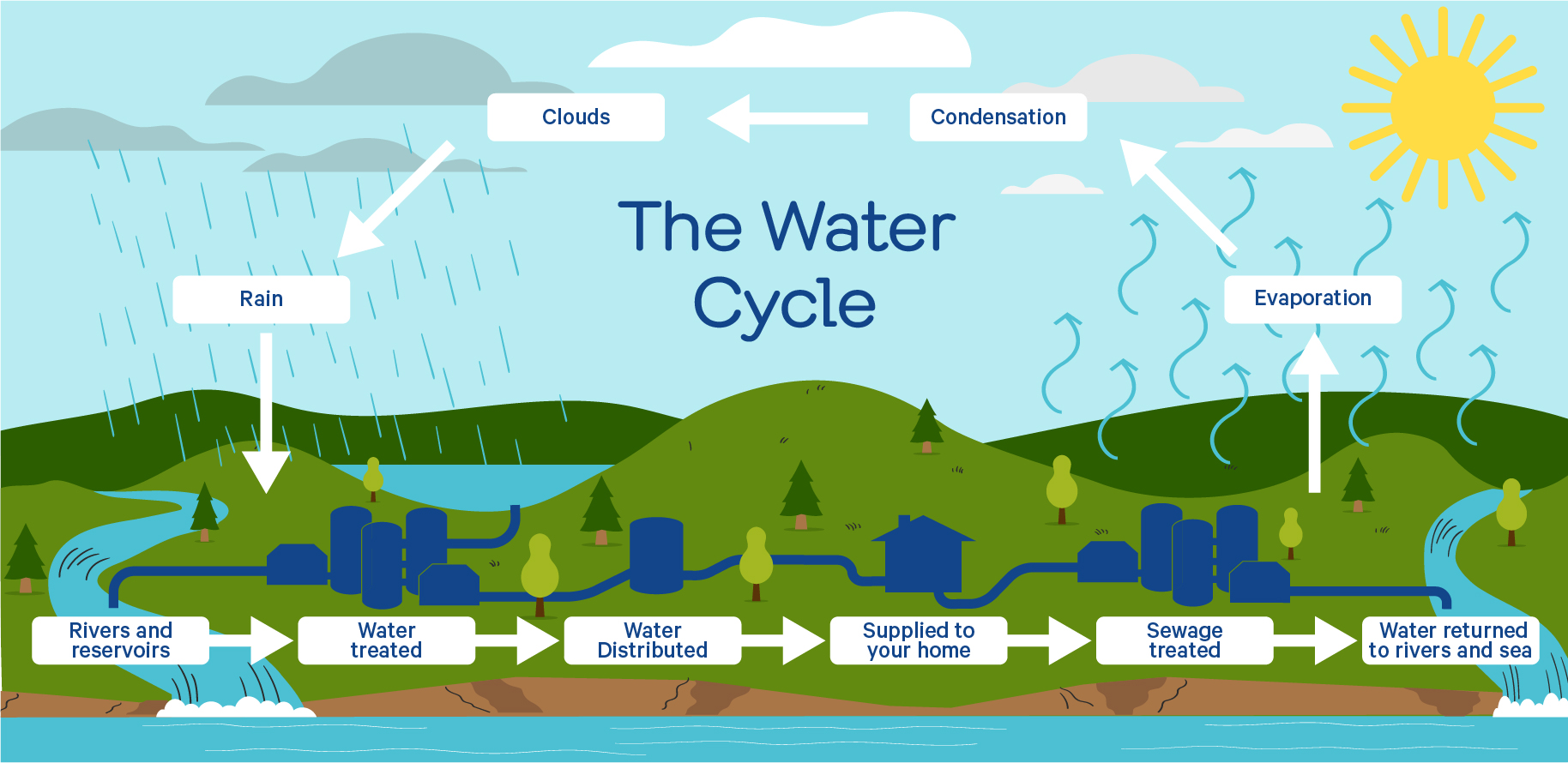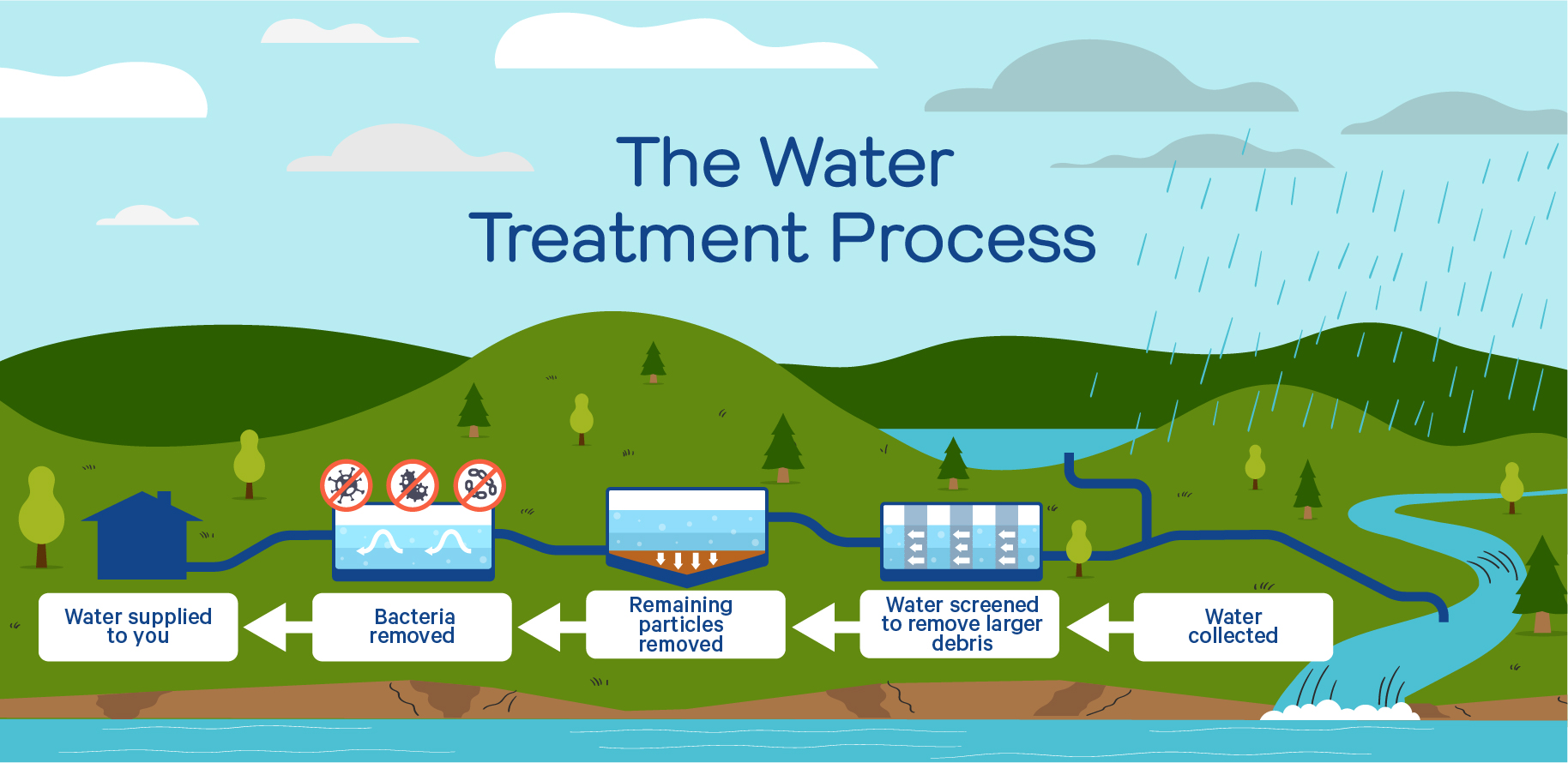
The journey of water
Ever wondered where your water’s come from before you drink it? Find out what we do to get it to you.
A natural cycle threatened by climate change
Everything we do is reliant on the natural Water Cycle. Rain is what allows us to sustainably operate.
Rain falls into rivers, which then flow into our reservoirs, keeping them full.
If it doesn’t rain, rivers get low. Less water is collected into the reservoirs, and their levels start to drop. Meaning there is less water available in the environment for us to take for treatment.
In the past, the South West has had very reliable rainfall. However, climate change is altering that.
We’re having to adjust the way we operate to look outside our traditional methods of water treatment, to make sure we always have enough supply to meet demand.
Making water drinkable
Water treatment starts long before the water reaches the treatment works. If raw water sources are fit and healthy, it makes our job of cleaning it a lot easier. There are many stages of treatment that water goes through before we're happy enough to send it to your tap.
Water of the future
There are many exciting innovations happening in water treatment every year. We're at the forefront of this progress in the UK, having built its very first ceramic membrane treatment works in 2021.
How you can protect our water's future
Providing 1.8 million people with water is a balancing act of keeping a supply going whilst taking water from an environment that has less and less in it because of climate change. That's why it's important to be aware of your water use, and save where you can. Being water efficient isn't about not using water, but about only using the water you need.











